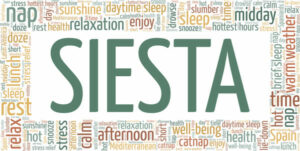
Napping, also known as a power nap or catnap, is a short period of sleep typically taken during the day. It is a common practice in many cultures, and studies have shown that napping can have a positive impact on both mental and physical health. However, there are many misconceptions about napping, and some people believe that it is a sign of laziness or lack of productivity. This post will explore why napping is good for you, the different types of naps, how to nap effectively, and the cultural significance of napping around the world.
Benefits of Napping
Napping has been shown to have numerous benefits for both mental and physical health. One of the most significant benefits is improved cognitive function. Studies have shown that napping can improve memory, reaction time, and alertness.
In fact, a study conducted by NASA found that pilots who took a 26-minute nap had a 34% increase in performance compared to those who didn’t nap. Another study conducted by the University of California, Berkeley found that napping can improve the brain’s ability to process and retain information.
Napping can also have a positive impact on mood and emotional well-being. A short nap can help reduce stress, anxiety, and feelings of fatigue. This is because napping can help the body to release feel-good hormones such as dopamine and serotonin, which can help to improve mood and reduce feelings of stress and anxiety.
Napping has also been shown to have a positive impact on physical health. A study published in the Archives of Internal Medicine found that napping can help to reduce the risk of heart disease. The study followed over 23,000 people for six years and found that those who napped for 30 minutes or more at least three times a week had a 37% lower risk of dying from heart disease.
Types of Naps
There are several types of naps, and each type can have a different impact on the body and mind. The most common types of naps are:
1. Power Nap – A power nap is a short nap of around 20 to 30 minutes. It is designed to provide a quick burst of energy and improve cognitive function.
2. Recovery Nap – A recovery nap is a longer nap of around 90 minutes. It is designed to help the body recover from physical or mental exertion and provide a more restorative sleep.
3. Planned Nap – A planned nap is a nap that is taken at a specific time each day. It is designed to help regulate the body’s circadian rhythm and improve sleep quality.
4. Emergency Nap – An emergency nap is a nap that is taken when the body is experiencing extreme fatigue or exhaustion. It is designed to help the body recover quickly and provide an immediate boost of energy.
How to Nap Effectively
Napping can be an effective way to boost energy and improve cognitive function, but it is important to nap effectively to reap the benefits. Here are some tips for napping effectively:
 1. Find a quiet and comfortable place to nap – It is important to find a quiet and comfortable place to nap to help you relax and fall asleep quickly.
1. Find a quiet and comfortable place to nap – It is important to find a quiet and comfortable place to nap to help you relax and fall asleep quickly.
2. Set a timer – Setting a timer can help you avoid oversleeping and feeling groggy when you wake up.
3. Avoid caffeine and alcohol – Caffeine and alcohol can interfere with sleep and make it harder to fall asleep during a nap.
4. Use a sleep mask or earplugs – A sleep mask or earplugs can help block out light and noise, making it easier to fall asleep and stay asleep during a nap.
5. Don’t nap too late in the day – Napping too late in the day can interfere with nighttime sleep and make it harder to fall asleep at night.
Cultural Significance of Napping
Napping has a significant cultural significance around the world. In many countries, taking a nap during the day is not only accepted but also encouraged.

In Spain, for example, the practice of “siesta” is a cultural tradition that involves taking a nap after lunch. Siesta is seen as a way to avoid the heat and recharge before continuing with the day’s activities.
In China, napping is also a common practice and is known as “wu jiao” or “afternoon sleep.” It is believed that napping can help to balance the body’s energy and improve overall health.
Napping is also encouraged in Japan, and is known as “inemuri,” which means “sleeping while present.” Inemuri is seen as a sign of dedication to work and is often done in public places such as trains and buses.
In the United States, napping is not as widely accepted as it is in other cultures, and it is often viewed as a sign of laziness or lack of productivity. However, this attitude is slowly changing, and many companies are now encouraging employees to take naps during the workday to improve productivity and reduce stress.
Conclusion
So why napping is good for you? Napping can have a significant impact on both mental and physical health, and it is a common practice in many cultures around the world. Napping can improve cognitive function, mood, and physical health, and there are several different types of naps, each with its own benefits.
To nap effectively, it is important to find a quiet and comfortable place to nap, set a timer, and avoid caffeine and alcohol.
While napping is not as widely accepted in some cultures as it is in others, its benefits are undeniable, and more and more people are beginning to recognize the importance of taking a nap during the day.


2 Responses
Hey , I love your articles really,this one beautifully encapsulates the myriad benefits of napping, debunking common misconceptions and highlighting its significance across various cultures. From enhancing cognitive function to improving mood and physical health, napping emerges as a powerful tool for rejuvenation and well-being. The exploration of different nap types and effective nap practices offers practical insights for maximizing its benefits. Well done and thank you for sharing.
Hi Ela, thank you for your wonderful feedback! We’re thrilled that you enjoyed the article and found it insightful. Napping indeed offers numerous benefits, from boosting cognitive function and mood to enhancing physical health. It’s fascinating to see how different cultures embrace this rejuvenating practice, each with its own unique approach.
We’re glad you found the exploration of different nap types and effective napping tips helpful. Incorporating naps into your routine can truly transform your daily well-being. If you haven’t already, give one of the suggested nap types a try and see how it impacts your energy and mood.
Thank you again for your kind words and support. Here’s to many refreshing naps ahead!